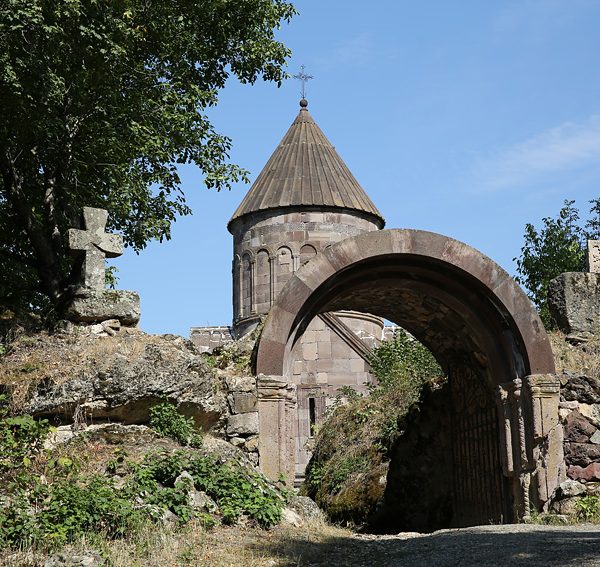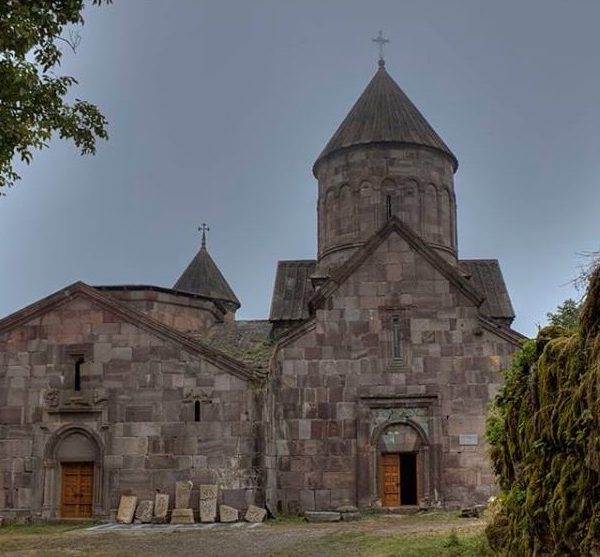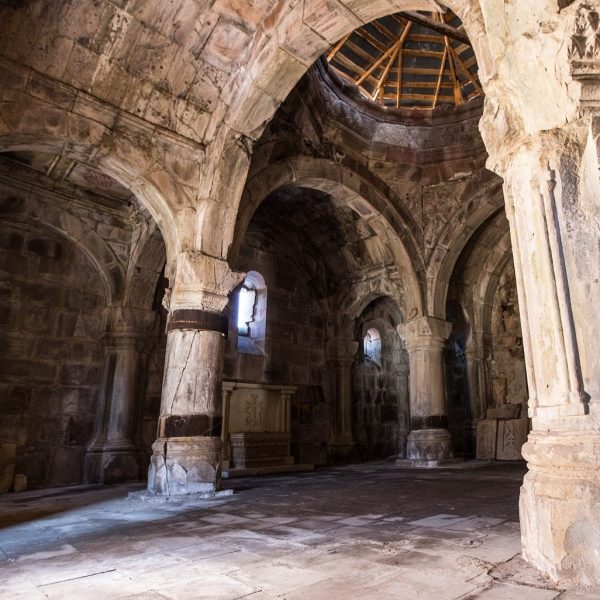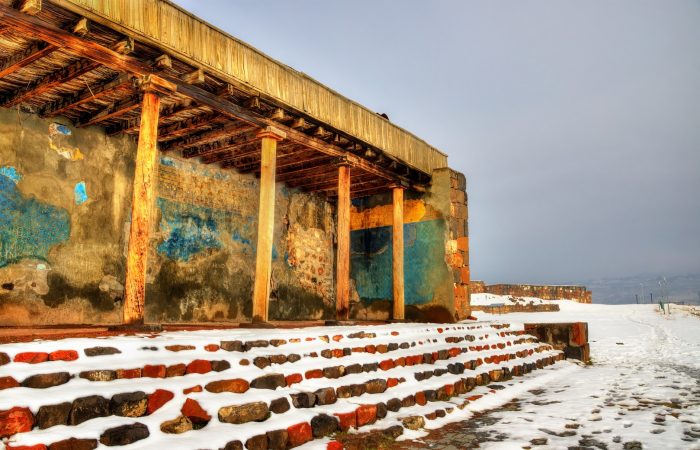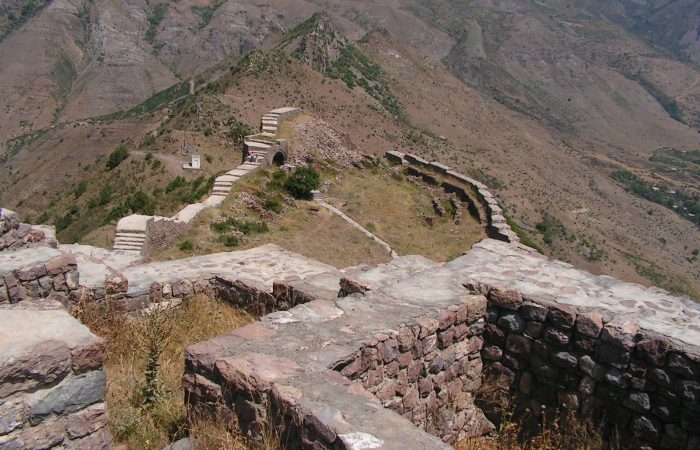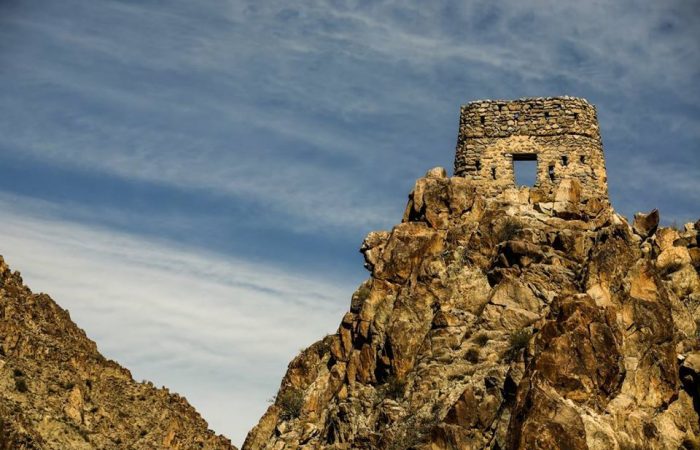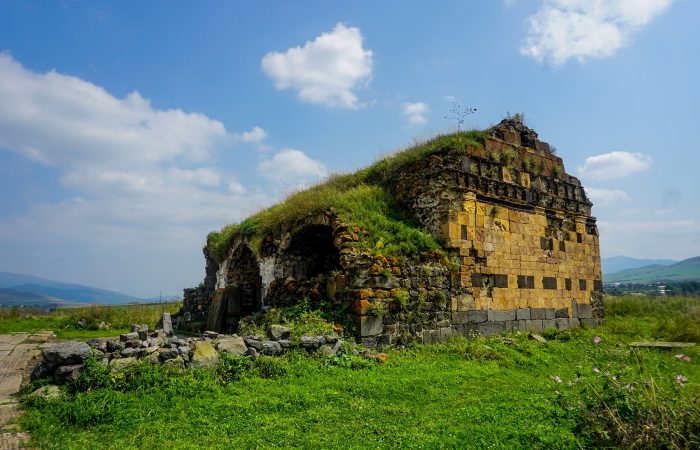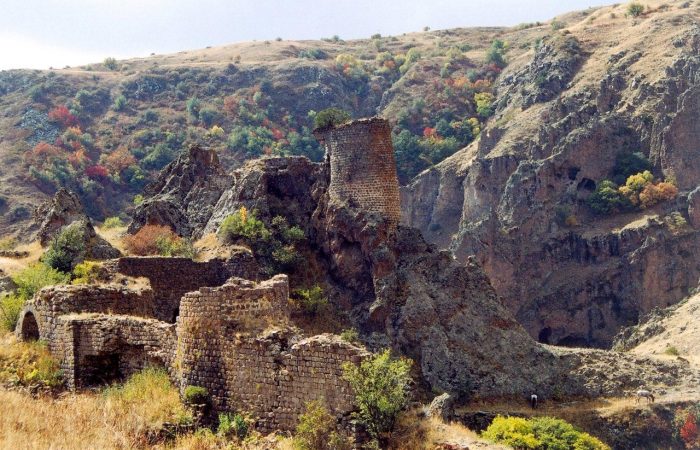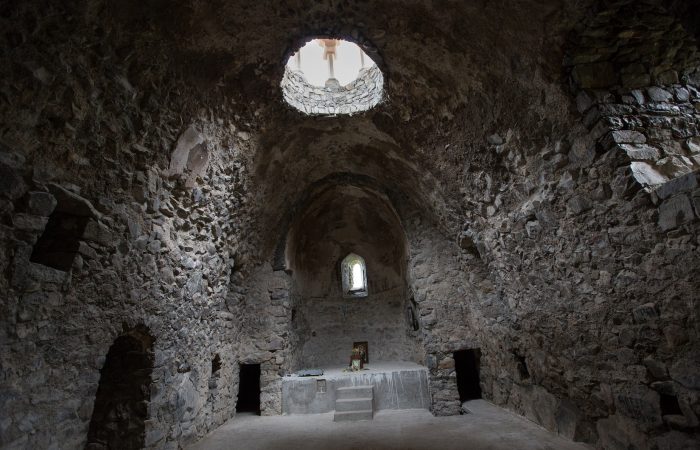The Main Church
The history of the main church and its construction is known from a cross-stone (khachkar), broken into 4 pieces and found by G. Sargsyan in 1953. The inscription on it talks of Vardan, son of Prince Bazaz, the builder of the main church in 1207. The cross-stone used to be located on the southern part of the church.
The exterior of the church is rectangular, the interior is cruciform. As any other Armenian church, this one also bears the genius and mastery of Armenian artists. The decorations of the church include an eagle holding a calf in its claws, sphinxes, sirens, local flora and fauna. The walls of the church bear different types of floral prints. There is also a picture of a man with isntruments in a boat. The word “Eritasard” (“Young man” in Armenian) is carved into the picture. It is thought to be the portrait of the sculptor of the Main Church.
The altar bears geometric images. Other parts of the construction that are worth the onlookers’ concentrated attention are the windows. They are in the forms of squares and circles. Each of them is like a separate piece of art, carved with majestic images. The light passing through them makes the atmosphere inside unique.
The bas-reliefs and eight-pointed stars of the interior design are considered to be the best examples of Armenian art of the 11th-13th centuries. Despite the size of the monastery, the design of the complex makes the church enter the list of most important monuments of the country.
The narthex of the church was built even earlier than the whole church. Vache A. Vachutyan is the creator of the narthex, which bears the coat of arms of the builder.
Surb Astvatsatsin
Surb Astvatsatsin (Holy Mother of God) church was built in 1198 and is located in the eastern part of the complex. The building is constructed of white stone and is attributed to the family of Hovhannes, the head of Makaravank at that time.
Ruins of some residential houses were found around the monastery. These houses hosted monks of Makaravank in different times. Not too far away you will also see a small Armenian-style cemetery. As usual, the tombs are decorated with cross-stones and are fenced. They are a perfect contrast to the Western-style cemeteries and can be distinguished by the usage of bigger space and constructions.
The Third Church
The complex includes another church that is less famous than the previous two. The style of the architecture is the same. The exterior of the church is rectangular, while the interior is in form of a crucifix.
Relics House
Unfortunetly, the building is not well preserved, and all you can now witness are the white walls of the Relics House. The construction dates back to the 13th century.
There is also a structure that houses a mineral spring, one of the peculiarities of the country, which you can see almost all over the territory.
The churches, especially the interiors, are well-preserved. However, the complex is not used for religious events anymore, although it’s open for anyone who wants to visit it.
Makaravank Legends
Amost all sacred places in Armenia have become themes for folklore and legends. Makaravank Monastery is not an exception. According to one of those legends, a man named Makar built this church with his only son. The son was a mason, he carved the stones and the father placed them. The walls of the church were getting higher and higher. Makar was so dedicated to his work that he stopped coming down of the walls and spent the nights on the church. One day Makar noticed that the stones have become somehow different, the sizes and the carvings were much poorer. Soon he found out that his son did not feel good. The villagers told him he was ill. Makar insisted that the villagers brought his son to him, regardless of the condition he was in. No one fulfilled his request, and Makar understood that his son had already passed away. He threw himself down the walls and died. The church remained incomplete, and villagers burried Makar under the walls of the church he and his son had built. Hence, the name of the monastery – Makaravank (“vank” meaning monastery in Armenian).
There is also another legend according to which the monastery was once called Agravavank (“Monastery of Crows”). The story has it that one day, when the workers of the monastery were having lunch, a snake sneaked into the soup. At that minute a crow was flying above them, it saw the snake and tried to warn the men about the snake. The men, however, didn’t understand the crow’s language. Just when the cook was to pour the soup to one of the workers, the crow flew straight down like a stone and threw itself into the boiling soup. Only after cleaning the pans did the men find the snake. They called the monastery after the bird who saved their lives and sacrificed its own.
There is a small picnic area not far away from the churches. Visitors can bring their own food and relax surrounded by the wonderful ancient forest. From the point of view of its architectural style, the complex is similar to Gandzasar, Noravank, Aghtamar, and a number of other churches.
The best time to visit the site is either in late spring or in summer, when the forest is in the full swing of blossoming. As Armenia is an overwelmingly mountainous country, vast forests are especially pleasant.
The majority of churches spread accross Armenia are hidden either on the tops of the mountains or deep in the forests. Makaravank obviously belongs to the second category. The beauty and history it radiates completes the ancient spirit that can be felt in all of the sacred sites of Armenia.

